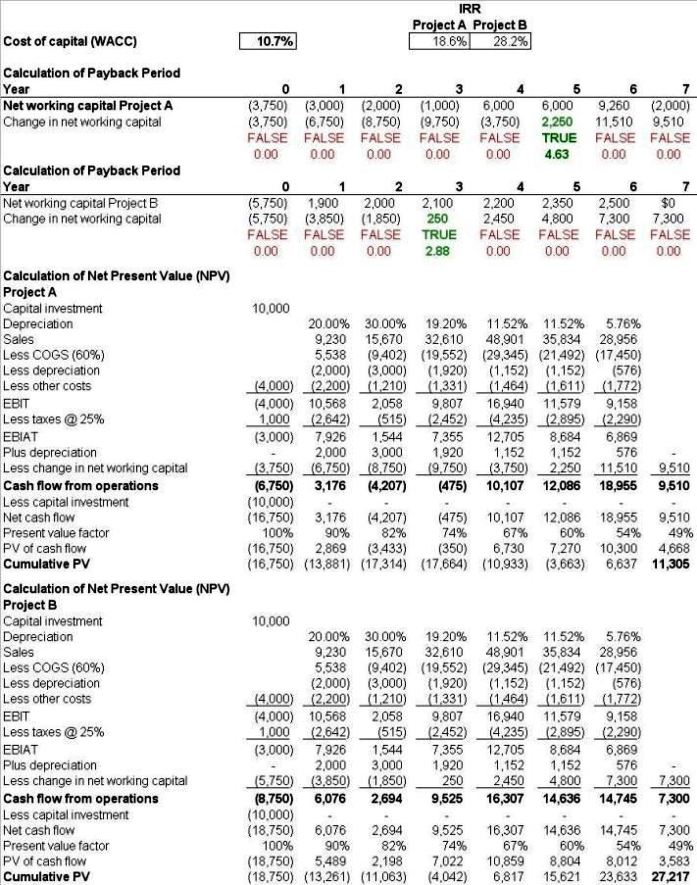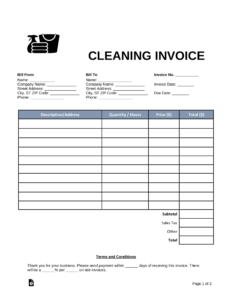Managing an information technology (IT) department requires careful planning and budgeting. As technology continues to evolve at a rapid pace, organizations must allocate resources strategically to stay competitive. An IT budget template is a valuable tool that helps organizations plan and track their technology expenses effectively. In this article, we will explore the importance of having an IT budget, discuss the components of a comprehensive IT budget template, and provide valuable insights on how to create and optimize your IT budget.
The Importance of an IT Budget
An IT budget serves as a roadmap for allocating financial resources to various technology initiatives within an organization. It allows businesses to plan and prioritize their IT projects, manage costs, and ensure that technology investments align with overall business goals. Here are some key reasons why having an IT budget is crucial:
- Resource Allocation: An IT budget helps organizations allocate resources effectively by identifying and prioritizing technology needs. It ensures that critical projects receive the necessary funding and resources, while non-essential initiatives are put on hold or scaled back.
- Cost Management: With an IT budget, businesses can track and control their technology expenses. By monitoring costs and identifying areas of overspending or inefficiency, organizations can make informed decisions to optimize their IT investments and reduce unnecessary expenditures.
- Strategic Planning: An IT budget enables organizations to align their technology initiatives with their overall business strategy. It ensures that technology investments support the company’s long-term goals and objectives, promoting growth and competitive advantage.
- Risk Mitigation: By budgeting for technology upgrades, maintenance, and cybersecurity measures, organizations can mitigate potential risks and prevent costly disruptions. An IT budget allows businesses to proactively address security vulnerabilities and invest in necessary safeguards.
Components of an IT Budget Template
Creating a comprehensive IT budget requires careful consideration of various components. A well-designed IT budget template should include the following key elements:
1. Hardware and Software Costs
One of the significant expenses in an IT budget is hardware and software costs. This category encompasses the purchase or lease of computer equipment, servers, laptops, networking devices, and software licenses. It is essential to estimate the lifecycle of hardware and software to plan for replacements and upgrades effectively.
2. IT Staffing
The IT department relies on skilled professionals to manage and support technology infrastructure. The IT staffing component of the budget should include salaries, benefits, training, and recruitment costs. It is crucial to assess the current and future staffing needs to ensure adequate resources are allocated to meet the demands of the organization.
3. Maintenance and Support
Technology requires ongoing maintenance and support to ensure optimal performance and minimize downtime. This category includes costs associated with software updates, hardware repairs, system maintenance, and technical support services. Allocating funds for maintenance and support helps organizations proactively address issues and maintain the reliability of their technology infrastructure.
4. Cloud Services and Hosting
Many organizations rely on cloud services and hosting for data storage, backup, and software-as-a-service (SaaS) solutions. This category of the IT budget template should account for subscription fees, data transfer costs, and any additional expenses related to cloud services. It is essential to assess the organization’s cloud computing needs and choose cost-effective solutions that align with business requirements.
5. Cybersecurity
In today’s digital landscape, cybersecurity is a top priority for organizations. The IT budget should allocate funds for cybersecurity measures such as firewalls, antivirus software, intrusion detection systems, and employee training. Investing in robust cybersecurity measures helps protect sensitive data, prevent cyber-attacks, and minimize the potential financial and reputational damage associated with security breaches.
6. Training and Professional Development
Technology is constantly evolving, and IT professionals must stay updated with the latest trends and advancements. Allocating a portion of the IT budget for training and professional development ensures that IT staff has the necessary skills and knowledge to support the organization’s technology needs. This category may include costs for conferences, certifications, online courses, and workshops.
7. Project Management
Effective project management is crucial for the successful implementation of technology initiatives. Allocating funds for project management tools, software, and resources helps organizations streamline project workflows, track progress, and ensure that projects are delivered on time and within budget.
8. Miscellaneous Expenses
An IT budget template should also account for miscellaneous expenses that may arise throughout the year. This category can include unforeseen repairs, software upgrades, consulting fees, and other miscellaneous costs that are not covered by the other budget components. It is advisable to allocate a contingency fund to address unexpected technology-related expenses.
Creating an IT Budget Template
Now that we understand the importance of an IT budget and the key components it should include, let’s explore the steps to create an effective IT budget template:
1. Assess Current IT Infrastructure
Before creating an IT budget, assess your organization’s current IT infrastructure. Identify the hardware, software, and services currently in use and evaluate their effectiveness and efficiency. Determine if any upgrades or replacements are necessary and prioritize them based on business needs.
2. Set Clear Objectives
Define the objectives of your IT budget. What specific goals do you want to achieve through your technology investments? Are you aiming to improve productivity, enhance cybersecurity, or streamline operations? Setting clear objectives will help guide your budgeting decisions and ensure that your technology investments align with your business strategy.
3. Allocate Resources
Based on your objectives and assessment of your IT infrastructure, allocate resources to each component of your IT budget. Consider the expected lifespan of hardware and software, the staffing requirements, and the level of investment needed to achieve your objectives. Prioritize critical areas that directly impact your business operations.
4. Research and Estimate Costs
Research and estimate the costs associated with each component of your IT budget. Consider factors such as market prices, vendor quotes, and industry benchmarks. It may be helpful to consult with IT professionals or seek advice from industry experts to ensure accurate cost estimations.
5. Document and Track Expenses
Create a detailed document or spreadsheet to track your IT budget and record expenses. Use clear headings and subheadings to categorize the various components of your budget. Regularly update and review your budget to ensure that it remains aligned with your objectives and adjust as needed based on actual expenses and changing business priorities.
6. Optimize Your Budget
Continuously optimize your IT budget by identifying areas for cost savings and efficiency improvements. Look for opportunities to leverage cloud services, automate processes, and streamline workflows. Regularly review your technology investments and assess their impact on your business objectives.
Case Study: Optimizing IT Budget for Company XYZ
Company XYZ, a medium-sized manufacturing company, faced challenges in managing their IT budget effectively. They had experienced unexpected technology failures, overspending on hardware upgrades, and a lack of alignment between technology investments and business goals. To address these issues, XYZ implemented a comprehensive IT budget template and adopted a proactive budgeting approach.
By assessing their current IT infrastructure, XYZ identified areas for improvement and set clear objectives for their IT budget. They allocated resources based on the expected lifespan of hardware and software, as well as the staffing requirements. They researched and estimated costs for each component, considering market prices and industry benchmarks.
XYZ documented and tracked their IT expenses using a detailed spreadsheet, ensuring transparency and accountability. They regularly reviewed their budget, making adjustments based on actual expenses and changing business priorities. By optimizing their budget, XYZ identified opportunities for cost savings, such as transitioning certain services to the cloud and implementing automation tools.
As a result of their efforts, Company XYZ achieved significant improvements in their IT budget management. They experienced fewer technology failures due to proactive maintenance, reduced overspending on hardware upgrades, and increased alignment between technology investments and business goals. Their optimized budget allowed them to allocate resources strategically and invest in initiatives that directly contributed to their overall growth and competitiveness.
Conclusion
An IT budget template is a valuable tool for organizations to effectively plan and track their technology expenses. By allocating resources strategically and aligning technology investments with business objectives, companies can optimize their IT budgets and stay competitive in today’s digital landscape. A well-designed IT budget template should include key components such as hardware and software costs, IT staffing, maintenance and support, cloud services, cybersecurity, training and professional development, project management, and miscellaneous expenses. By following the steps to create an IT budget template and continuously optimizing it, organizations can achieve cost savings, mitigate risks, and drive business growth through technology.
FAQs After The Conclusion
1. Why is an IT budget important?
An IT budget is important because it helps organizations allocate resources effectively, manage costs, align technology initiatives with business strategy, and mitigate risks.
2. What should be included in an IT budget template?
An IT budget template should include components such as hardware and software costs, IT staffing, maintenance and support, cloud services, cybersecurity, training and professional development, project management, and miscellaneous expenses.
3. How do you create an ITbudget template?
To create an IT budget template, follow these steps:
- Assess your current IT infrastructure.
- Set clear objectives for your IT budget.
- Allocate resources to each component of your budget.
- Research and estimate costs for each component.
- Create a document or spreadsheet to track expenses.
- Regularly update and review your budget.
- Optimize your budget by identifying cost-saving opportunities.
4. How can an IT budget template help with cost management?
An IT budget template helps with cost management by allowing organizations to track and control their technology expenses. It helps identify areas of overspending or inefficiency, enabling informed decisions to optimize IT investments and reduce unnecessary expenditures.
5. What are the benefits of optimizing an IT budget?
Optimizing an IT budget allows organizations to achieve cost savings, mitigate risks, and drive business growth through technology. It helps align technology investments with business objectives, improve efficiency, and ensure that critical projects receive adequate funding.
Summary
An IT budget template is a crucial tool for organizations to effectively manage their technology expenses. It allows for resource allocation, cost management, strategic planning, and risk mitigation. A comprehensive IT budget template should include components such as hardware and software costs, IT staffing, maintenance and support, cloud services, cybersecurity, training and professional development, project management, and miscellaneous expenses. By following the steps to create an IT budget template and continuously optimizing it, organizations can achieve cost savings, align technology investments with business goals, and drive growth through technology.





